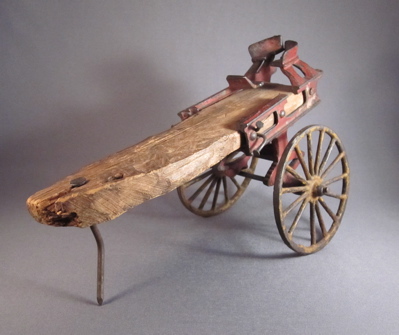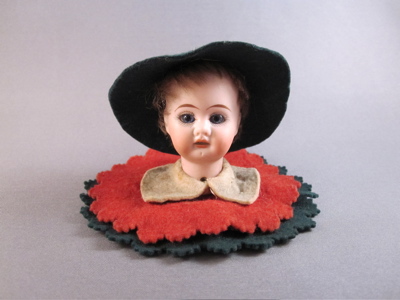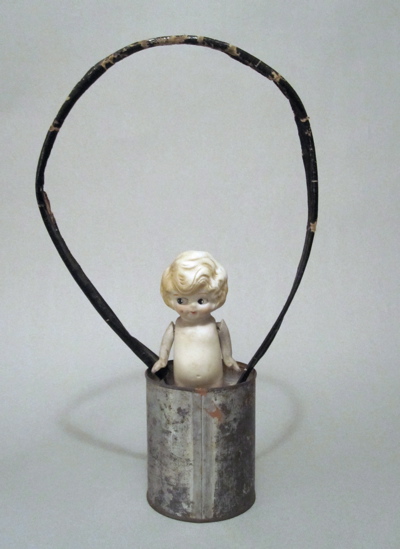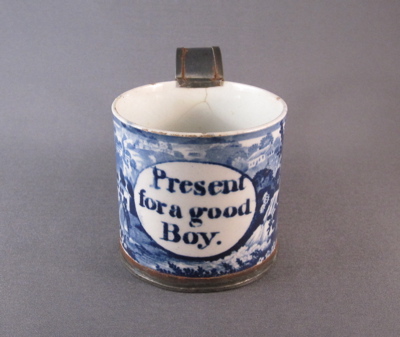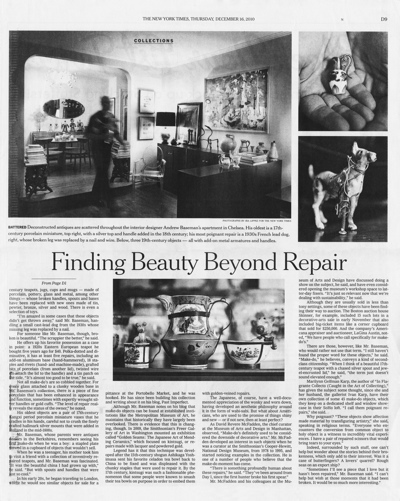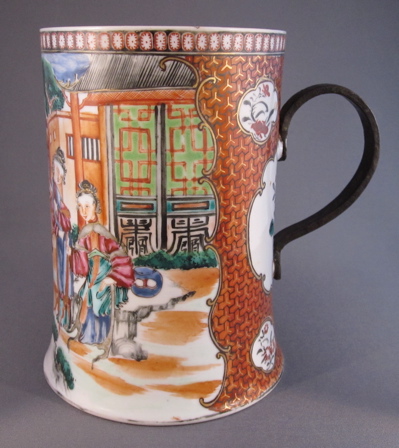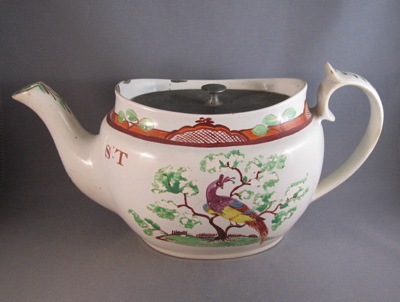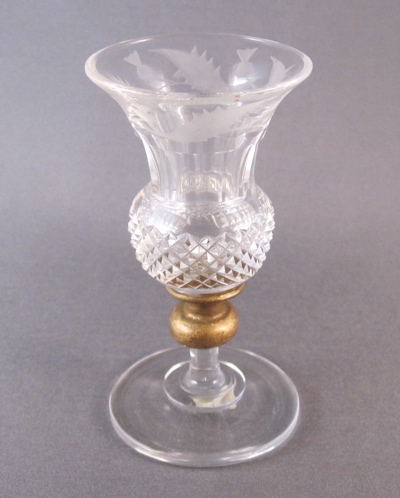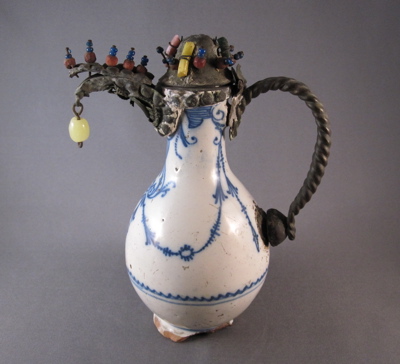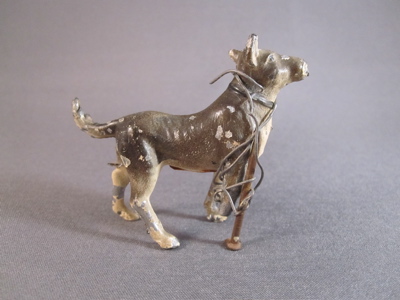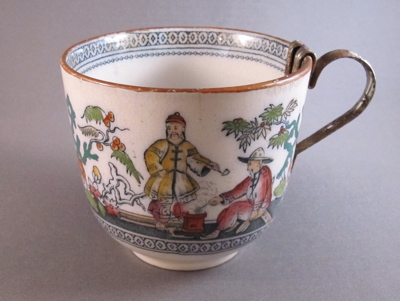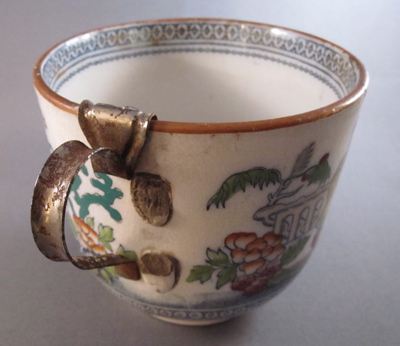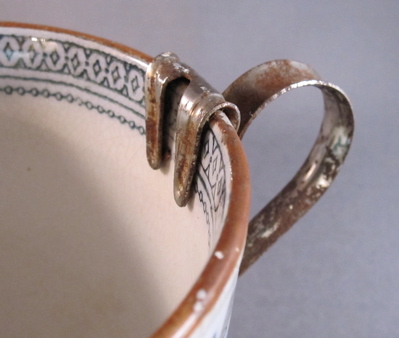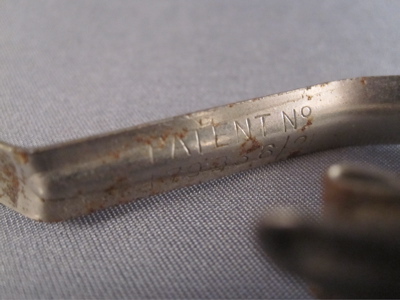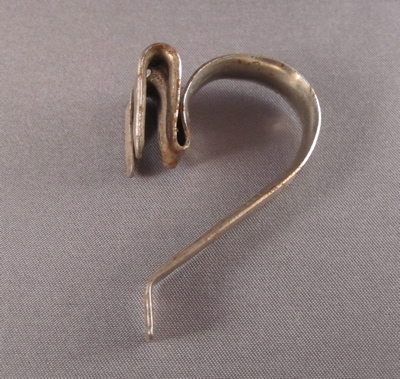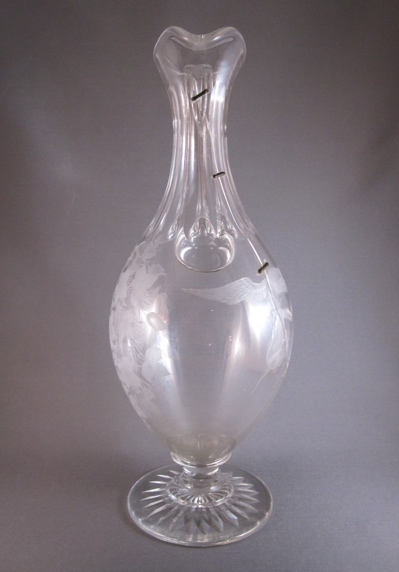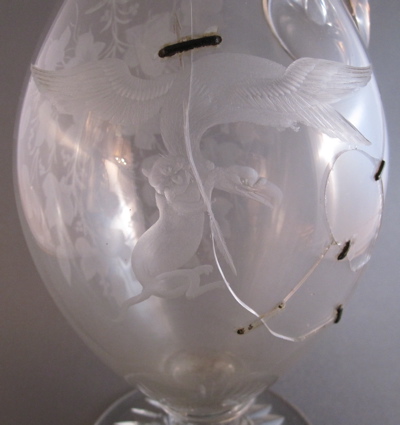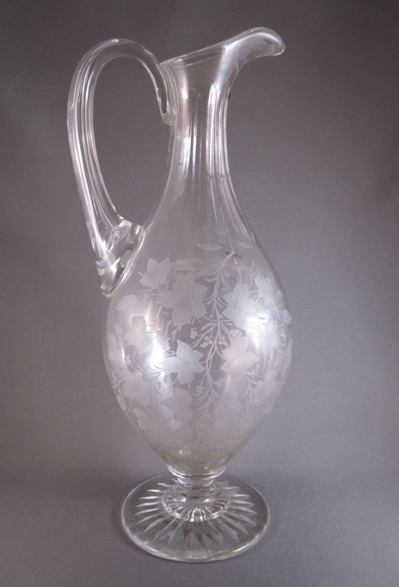A Chinese porcelain teapot with hand painted cobalt blue Nanking underglaze decoration dates from 1790 to 1820. This type of design, produced in China since the mid-17th century, was so popular that it was first copied in 1780 by the English potter Thomas Turner of Caughley and was mass produced as the “Willow Pattern” (aka “Blue Willow”) with transfer decoration and sold worldwide
Today it is considered “America’s favorite patterned ware” and can be found in the wealthiest homes and roadside diners alike
Teapot measures 4-3/4″ tall and is nearly 10″ wide, from tip of the spout to the end of the replacement handle
A tinsmith came to the aid of the distraught original owner of the broken teapot and created an elaborate replacement handle. The metal handle has crimped edges, a thumb rest, hand grip and a tin truss encompassing the teapot for extra support
The same cobalt blue pagoda pattern is on both sides of the teapot
All that remains of the broken lapped reeded handle are the leaf terminals
This teapot with similar form and decoration shows what my teapot would have looked like with its original lid and handle intact
Photo courtesy of Equinox Antiques







